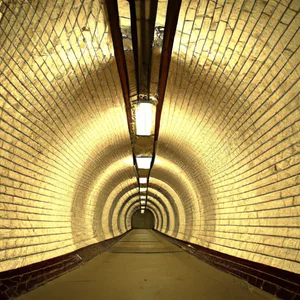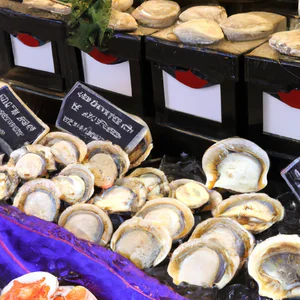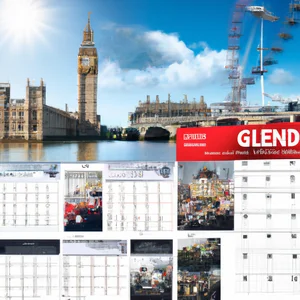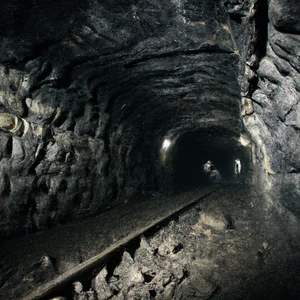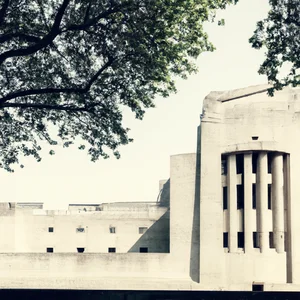Book your experience
Tate Modern Ceramics Class: Hands-on Art with Views of the Thames
Last Saturday, I decided to attend a ceramics class at the Tate Modern. Yes, that’s right! Imagine, a day that starts with a bit of art and ends with an incredible view of the Thames.
When I arrived, I have to say the atmosphere was really electric. There were all kinds of people, a bit like a colorful bazaar of styles and stories. Some seemed like true experts, while others, like me, were there to have fun and learn. And I, well, I’m not exactly a Picasso of ceramics, to be honest.
The lesson started with our teacher, who had such a simple and direct way of explaining everything. She reminded me of that friend you have, always ready to lend you a hand, but who doesn’t mind telling you when you’re making a mess. Her hands moved like they were dancing, and as she molded the clay, I thought, “Damn, how does she do that?”
After a while, I tried turning the lathe too. And I have to say, it’s not quite like flipping a burger on the grill! It took me a while to figure out how to keep up the pace and not have the clay splash everywhere. But in the end, I created a… well, let’s call it a “vase”. Or at least, that’s what I hoped it would be. Maybe it looked more like a pizza dish, but hey, it’s the intention that counts, right?
And then, while I was there getting my hands dirty, I had a thought: ceramics is a bit like life. Sometimes, you start modeling something and realize it’s not turning out the way you want, but then, with a little patience and creativity, you manage to make something unique out of it. I don’t know, maybe it’s a cliché, but it struck me.
At a certain point, we all started chatting, exchanging opinions on our “masterpieces”. There was a guy who had made some sort of cup with a handle that looked more like a tentacle. But, you know, what matters is that everyone had put their own effort into their work. It was nice to see how art can bring people together, even if we were there to make a bit of mess with the clay.
And to end the day on a high note, the view over the Thames was simply breathtaking. The sun was setting, and the river sparkled as if someone had scattered glitter everywhere. I thought about how special that moment was, a mix of creativity and natural beauty. In short, if you want a different weekend, I recommend you try something similar. You may not become great artists, but I assure you that you will take home a lot of good memories!
Ceramics class at Tate Modern: Hands-on art overlooking the Thames
Discover the art of ceramics in London
Imagine yourself in a bright atelier inside the Tate Modern, surrounded by contemporary works of art that inspire creativity. The first time I put my hands in clay during a workshop here, I felt an immediate connection to British craftsmanship. The clay, cool and damp, seemed to respond to my movements, while the sunlight filtered through the huge windows, reflecting on the flowing Thames. This is the power of ceramics: an art that unites past and present, tradition and innovation.
Tate Modern is not just a museum; it is a place where art comes to life through direct interaction. The pottery workshops here are designed for everyone from beginners to experienced artists. According to the Tate’s official website, these courses are held regularly and offer the opportunity to learn various techniques, from hand modeling to lathe making. It is advisable to book in advance, as places tend to fill up quickly.
A little-known tip? Bring your own materials! Many local artists suggest bringing your own pottery tool kit. Not only will it allow you to work with gear you know and love, but it will also give you the opportunity to customize your creative experience. This is a way to feel at home even in such a prestigious environment.
The cultural impact of ceramics in Britain is profound. From Wedgwood’s famous ceramics to contemporary works by artists such as Grayson Perry, ceramics have reflected and influenced social and artistic changes for centuries. Tate Modern, as a center of cultural innovation, celebrates these traditions, transforming them into hands-on experiences for visitors.
Another important aspect is sustainability. In an age where responsible consumption is taking center stage, many pottery classes incorporate eco-friendly practices, using local clays and recycled materials. This not only reduces environmental impact, but also encourages deeper reflection on art and its place in the world.
If you want an authentic experience, I recommend trying to create an object that represents a souvenir of your trip to London. Whether it’s a small bowl or a decorative plate, the act of shaping clay will become a tangible memory to take home.
It is important to note that some may think that pottery is an art reserved only for experts, but in reality it is an accessible and rewarding activity for all. Don’t be discouraged by preconceptions: each piece created is unique and reflects the artist’s personality.
In conclusion, as you model clay overlooking the Thames, ask yourself: What does art mean to me and how can it connect me with the history and culture of a place? Ceramics is not just an art form, but a bridge between cultures and generations, a way to explore and rediscover ourselves through creativity.
A hands-on experience overlooking the Thames
Imagine yourself sitting in a bright ceramic studio, with large windows overlooking the glittering Thames. This was my first experience in a pottery workshop in London, where the whisper of water and the singing of birds created an almost magical atmosphere. As my hands immersed themselves in the clay, I felt that every touch was a direct link with a thousand-year-old tradition, an art that spans time and generations.
Practical information
In London, one of the most renowned places to learn the art of ceramics is the Kiln Rooms, located in the Peckham district. Here, artists offer courses ranging from creating simple dishes to more complex pieces, all with river views. It is advisable to book in advance, especially on weekends, as places fill up quickly. For more details, visit their official website Kiln Rooms.
An insider tip
Unconventional advice? Bring your materials! Many workshops are open to using personal tools and supplies. Not only will this allow you to personalize your experience, but you will also be able to discover unique techniques that may not be commonly taught.
The cultural impact
Pottery has a long history in the UK, with traditions dating back centuries. London, in particular, has been a hub for ceramic innovation, with artists blending tradition and modernity, creating works of art that reflect the city’s cultural diversity. Ceramics by Wedgwood and other masters are now considered national treasures, testaments to an era when artisan techniques were at the heart of everyday life.
Sustainability in ceramics
In an age where sustainability is key, many pottery studios in London are adopting responsible practices. The use of local clays and recycled materials not only reduces environmental impact, but also encourages a return to the roots of artisanal production. This approach is not only eco-friendly, but also enriches the creative experience.
An activity worth trying
If you are looking for a sensory experience, I recommend taking part in a Touch and Shape session at Clay Time. Here you can explore different techniques of manipulating clay, feeling its texture and working with it in ways that will awaken your senses.
Myths to dispel
A common myth is that ceramics is an art reserved only for professionals. In reality, anyone can approach this art form, regardless of experience level. Every mistake is a learning opportunity and every piece created tells a unique story.
A final reflection
After this experience, I asked myself: what does the link between art and nature mean for us? Working clay with a view of the Thames is not just a creative act; it is a way to reconnect with the earth and with the history of humanity itself. Ceramics, in this context, becomes a bridge between past and present, an experience that goes far beyond simple creation. Are you ready to discover your artistic potential in such a stimulating environment?
The Tate Modern: a center of cultural innovation
In the beating heart of London, I found myself in front of an imposing industrial structure that once housed a power station. Tate Modern is not just a museum; it is a symbol of cultural transformation and innovation. As I walked through its galleries, a contemporary ceramic installation caught my attention. The pieces, created by emerging artists, spoke of a fusion between tradition and modernity, a recurring theme in this vibrant space.
A journey between art and architecture
The Tate Modern is not just a place to admire works of art; it is an immersive experience that stimulates creativity. With over 70,000 works of modern and contemporary art, the museum is a point of reference for those who wish to explore new artistic frontiers. Each year, the Tate hosts special events and temporary exhibitions that highlight innovative artists and cutting-edge techniques. For example, in 2023, an exhibition dedicated to contemporary ceramics was inaugurated, attracting visitors from all over the world.
Insider tip: Take part in the pottery workshops
A little-known tip is to take part in the ceramic workshops organized by the Tate. These events not only allow you to experience artistic creation firsthand, but also learn from expert artists who share their techniques and stories. It’s an opportunity to immerse yourself in ceramic culture, discovering how traditional practices intertwine with contemporary art.
A lasting cultural impact
Tate Modern has had a significant impact on the art scene in London and beyond. It democratized access to art, inviting everyone to explore and appreciate creativity in all its forms. Ceramics, in particular, has seen a resurgence thanks to spaces like this, where artists can express their visions without limits.
Sustainability in art
In an age of growing environmental awareness, Tate Modern promotes sustainable tourism practices. Many artists who exhibit here use recycled materials or techniques that minimize environmental impact. Participating in ceramic workshops in this context not only enriches one’s creative experience but also contributes to a greater cause.
An activity not to be missed
If you are an art lover and want a unique experience, don’t miss the opportunity to take part in a ceramics workshop at the Tate. You will be able to create your own piece of art, immersing yourself in tradition and modernity, while surrounded by works of world-famous artists.
Final reflections
Tate Modern is not just a museum; it’s a place where ideas come to life and creativity expands. I invite you to reflect: how can art, especially ceramics, transform your perception of the world around you? Your next visit could prove to be a journey of discovery not only of art, but also of yourself.
Ceramic techniques: tradition and modernity
A personal experience
I vividly remember my first ceramics class in London. I entered a studio hidden in the streets of Shoreditch, where the scent of damp clay mixed with that of freshly brewed coffee. As my hands got dirty, a local potter shared stories about how ancient techniques intertwine with modern innovations. In that moment, I understood that ceramics is not just an art, but a language that tells the story of an evolving culture.
Practical information
London offers numerous pottery studios where you can learn both traditional and contemporary techniques. Places like London Pottery Workshop and Kiln Rooms offer courses for all levels. For those interested, it is advisable to book in advance, especially on weekends, as places fill up quickly. Check their websites for updated hours and availability.
An insider tip
A tip that few know is to bring your own materials for the course. Many studios allow you to use clay and personal tools, allowing for a customization of the creative experience. This not only makes your work unique, but can also foster a deeper connection with the creation process.
Cultural and historical impact
Pottery has a long and fascinating history in the UK, dating back centuries. British ceramic techniques, such as Worcester porcelain and traditional Staffordshire tableware, have had a significant impact on global design and aesthetics. Today, contemporary artists are reinterpreting these techniques, fusing the past with innovation to create works that speak to cultural identity and sustainability.
Sustainability in ceramic art
Many London artists are adopting sustainable practices in their art, using recycled materials and low-impact techniques. This approach not only reduces the ecological impact, but also promotes greater awareness among ceramic course participants. Learning in a responsible context makes the experience even more meaningful.
Soak up the atmosphere
Imagine sitting at the lathe, while the outside world fades away. Natural light filters through the studio’s large windows, illuminating the spinning clay. The laughter and chatter of the other students create a vibrant atmosphere, where time seems to stop. Every manipulation of clay is an act of creation, a moment of connection between the artist and the material.
Activities to try
I recommend taking a ceramic workshop at Turner Contemporary, where art meets community. Here, you will have the opportunity to explore traditional techniques and see how contemporary artists are shaping the future of ceramics.
Myths to dispel
A common misconception is that ceramics is only a hobby for a few. In fact, it is an art accessible to all, regardless of age or ability. Each piece created tells a unique and personal story, making ceramics a universal language.
Final reflection
As you leave the studio with dirty hands and a smile on your face, ask yourself: How can ceramic techniques reflect your personal story? Every shape, every color, every imperfection is a journey in itself. We invite you to discover this fascinating world and be inspired by the fusion of tradition and modernity.
Unique tip: bring your materials!
A personal experience
I still remember the moment I crossed the threshold of a small ceramics studio on the riverfront, a place where art and nature merge in a creative embrace. As the scent of fresh clay mingled with the sound of the Thames waves, a thought crossed my mind: I should have brought my materials. My experience with ceramics, although limited, had taught me that every artist has his own personality, and the materials we choose to express our creativity tell a unique story.
Practical information
If you’re planning a pottery experience in London, consider bringing your favorite tools or materials, whether it’s a particular type of clay or specialized equipment. Many studios, such as The Kiln Rooms in Peckham, are open to this personalized approach and encourage participants to use materials they already know and love. This not only enriches your experience, but also provides the opportunity to create works that reflect your individual style. Check their website to book sessions and check space availability.
An insider tip
A little-known tip is to also bring along small textures or objects that can be imprinted into the clay. A piece of fabric, a leaf or even a small object found along the Thames can add a personal and unexpected touch to your creations. Not only will they enrich your work, but they will also make your final piece a tangible memento of your London adventure.
Cultural impact
Ceramics in London is not just an art, but a tradition rooted in British cultural heritage. From Wedgwood’s celebrated pottery to modern design studios, ceramic art has influenced and reflected social and cultural changes over the centuries. Bringing your materials also means contributing to this long history, infusing a piece of your identity into your work.
Sustainable tourism practices
In an age where sustainability is at the center of global debate, many ceramic studios in London are adopting responsible practices. They use local and recycled materials, making ceramic art not only a creative experience, but also a way to support the environment. By bringing your own materials, you are also helping to reduce waste and promote more conscious tourism.
Immersion in the atmosphere
Imagine sitting in a bright laboratory, overlooking the Thames, as the city lights begin to twinkle as evening falls. The laughter and chatter of classmates mixes with the delicate sound of hands working the clay. Each piece you create tells a part of you, a shared moment, a memory to take home.
An activity worth trying
If you want an unforgettable experience, take part in a pottery workshop at London Craft Week, where you can bring your own materials and work closely with renowned artists. It’s a unique opportunity to learn new techniques and create pieces that you’ll take home as souvenirs of your London adventure.
Myths about ceramics
A common misconception is that ceramics is an art exclusively for experts. In fact, it’s accessible to anyone, and bringing your own materials can make the experience even more personal and rewarding. Don’t be afraid to experiment and express your creativity!
Final reflection
So, what materials will you take with you on your art trip to London? Each piece you create will be a reflection not only of your skill, but also of the experiences and emotions you experienced during your stay. Let yourself be inspired by the city and the history that surrounds it; your journey into ceramics could prove to be much more than just a course, but a true act of personal creation.
History of British ceramics and its impact
When I stepped into a small ceramics workshop in the heart of London, I was greeted by a vibrant atmosphere, steeped in history and creativity. As I watched the craftsman shape the clay with skill, I remembered a sentence I had read: “Ceramics tell the story of our past, just like an open book.” This statement resonates deeply in a context like the British one, where ceramics have been able to combine tradition and innovation.
A journey through the centuries
The history of British ceramics is a journey that spans centuries, from the first Roman settlements to the present day. The famous Wedgwood porcelain and Staffordshire ceramics defined not only the artistic landscape, but also the social and economic dynamics of the United Kingdom. For example, Bristol pottery, produced in the 18th century, was a symbol of status among the upper classes, while pottery factories in the north of England provided jobs for generations of workers.
Insider tip
If you want to discover a lesser-known corner of British ceramics, visit the Museum of British Ceramics in Stoke-on-Trent. Here, you can explore extraordinary collections that tell not only the evolution of techniques, but also the social context of each era. This museum is often overlooked by tourists, but it offers a wealth of knowledge that will make you appreciate the art of ceramics even more.
The cultural impact
The impact of ceramics goes beyond the simple artistic aspect; it reflects the cultural influences and commercial interactions that have shaped British society. During the 18th and 19th centuries, British ceramics conquered global markets, bringing with them an idea of elegance and craftsmanship that influenced generations of artists and designers, from William Morris to Grayson Perry.
Sustainability in ceramic art
Today, many artists and ceramic studios are embracing sustainable practices. They use local clays and recycled materials, with the aim of reducing environmental impact. Taking ceramic classes that follow these principles will not only enrich you as an artist, but will also contribute to a more responsible future for art.
An experience not to be missed
For hands-on experience, I recommend booking a workshop at Kiln Rooms, where you can try your hand at creating unique pieces. Here, you will have the opportunity to learn traditional and modern techniques, while letting your hands tell your story through clay.
Myths to dispel
It is common to think that ceramics is an art exclusively for experts. In reality, anyone can approach this art form, regardless of previous experience. Many London workshops offer courses for beginners, proving that passion and curiosity are the real keys to excelling.
A personal reflection
As I walked the streets of London, I reflected on how significant the connection between art and community can be. Ceramic is not just a product; it is a means of human expression and connection. I invite you to consider: what is your story and how would you tell it through a piece of ceramic?
Sustainability: responsible art in ceramics
A personal experience of sustainability
I still remember the day I visited a small ceramic studio in London, nestled among the skyscrapers of Southwark. As I watched a local artist shape clay, one detail struck me: Her worktable was adorned not only with artwork but also with recycled materials. “Sustainability is at the heart of what we do,” she told me, as she proudly displayed her lei mugs made from reclaimed ceramics. This meeting opened my eyes to how ceramic art can be not only a form of expression, but also a powerful tool for promoting a more sustainable future.
A panorama of responsible practices
In recent years, London has seen a growing focus on sustainable practices in ceramics. Several schools and studios, such as London Pottery and The Kiln Rooms, offer courses focused on techniques environmentally friendly production. These spaces not only teach the art of ceramics, but also encourage the use of local, non-toxic materials. According to research published by the Craft Council, over 60% of contemporary artists in Great Britain consider sustainability as one of the main values of their practice.
A little-known tip
Here’s an insider tip: if you decide to join a pottery workshop in London, bring your creative materials with you! Many local artists are excited to work with clay and glazes that you have salvaged or chosen for their story. This not only reduces waste, but also makes your project unique and personal.
The cultural impact of sustainable ceramics
Ceramics has a long history in the UK, dating back centuries, but today the emphasis on sustainability is reshaping the cultural landscape. Artists like Emma Bridgewater and Richard Batterham are reinventing traditions, integrating ecological methods into their practices, thus contributing to a broader dialogue about environmental responsibility in art.
Responsible tourism practices
When attending pottery workshops in London, choose those that adopt sustainable tourism practices. Some studios, such as Sculpture Studios, actively work to reduce their environmental impact by using renewable energy and recycled materials. Supporting artists and artisans who dedicate themselves to these causes not only enriches your experience, but also contributes to positive change.
An immersive experience
For hands-on experience, I recommend signing up for a “Ceramic Making Workshop” session at The Kiln Rooms. Here you can not only learn the basic techniques, but also create unique pieces using sustainable materials. The teachers are passionate and ready to share their knowledge on the link between ceramics and sustainability.
Myths to dispel
A common misconception is that sustainable ceramics are less beautiful or of lower quality than traditional ceramics. In fact, many artists demonstrate that beauty can lie in the authenticity of the materials and the creative process. Ceramics made using sustainable practices can not only be aesthetically pleasing, but also tell stories of responsibility and innovation.
A final reflection
As you immerse yourself in the world of ceramics in London, ask yourself: How can I contribute to a more sustainable future through my artistic choices? It’s an invitation to explore not just art, but also how we can all become custodians of our planet, one piece of clay at a time.
Meet local artists: stories and inspirations
I still remember my first meeting with a local artist during a ceramics class at the Tate Modern. Sitting next to me was a middle-aged man, his hands covered in clay, telling stories of how his passion for pottery grew out of a simple childhood pastime. That conversation turned into a shared journey through the emotions, hopes, and challenges we both faced as creatives. This is the power of art: it can bring people together in unexpected ways.
A unique opportunity to connect
At Tate Modern, you will not only have the chance to learn ceramic techniques, but also meet local artists who share their experiences and inspirations. These encounters can prove enlightening, as each artist has a unique story to tell, often linked to British cultural traditions and contemporary influences. The Tate regularly hosts events and workshops where you can interact with these talents, making the experience even more enriching.
An insider tip
A little-known tip is to bring a small personal object with you that can serve as inspiration during the workshop. Whether it’s a photograph, a piece of fabric, or a travel souvenir, this object can help you connect with your creative process and explore how you integrate your personal story into the pottery you create.
The cultural impact of local art
British ceramics has a rich and varied history, extending from traditional Wedgwood pottery to modern artistic approaches. This art form is not only a reflection of local culture, but also a means of addressing social and environmental issues. Contemporary artists often use ceramics to explore themes such as sustainability, creating works that not only beautify spaces but also spark important conversations.
Sustainability and responsibility
In the current context, where sustainability has become a priority, many local artists adopt responsible practices, using recycled materials or production techniques with low environmental impact. Taking a ceramics workshop at Tate Modern not only allows you to explore your creativity, but also invites you to reflect on how you can contribute to a more sustainable future through art.
An immersive experience
Imagine working clay with the view of the Thames slowly flowing behind you. The sound of water and the buzz of conversations around create a vibrant atmosphere, stimulating your sense of creativity. Every touch of the clay under your fingers is an invitation to discover not only the beauty of art, but also the depth of the human connections it can generate.
A myth to dispel
A common misconception is that ceramics is an art exclusively for experts or for those who already have an artistic education. In fact, the workshops at Tate Modern are designed to accommodate people of all levels, from beginners to experts. The important thing is to have the desire to explore and get involved.
A final reflection
Ceramics is not just an art; it is a language, a way of communicating our experiences and emotions. After attending a workshop, I invite you to reflect: how could practical art transform the way you see the world? The Tate Modern is a place where this transformation can begin, leading you to know not only yourself, but others too in ways you never imagined.
A sensorial experience: the touch of clay
When I entered the Tate Modern room dedicated to ceramic art, the first thing that struck me was the feeling of clay between my fingers. It was like immersing your hands in a world of infinite possibilities, a material that responded to my touch, shaping itself and transforming into something unique. As I worked the clay, I felt connected not only to my piece, but also to the centuries-old tradition of this craft.
A hands-on experience overlooking the Thames
The natural light that filtered through the large windows offered spectacular views of the Thames, creating an atmosphere that stimulated creativity. Every time I looked up, the vibrant landscape of London seemed to encourage me to bring new ideas to life. That view was not just a background, but became an integral part of the creative process. It is an experience that involves all the senses: from the scent of the damp earth to the hearing of the crashing waves, every element contributes to making the moment unique.
Unconventional advice
Here’s a tip that few people know: bring your own materials! While the Tate offers everything you need, bringing a small piece of clay or some personal tools can make your work even more special. Furthermore, it can be a great way to break the ice with other participants, starting interesting conversations and exchanging techniques.
The cultural impact of ceramics
Ceramics has a long history in the UK, with roots in craft traditions that date back centuries. Tate Modern not only celebrates this heritage, but reinvents it, combining tradition with contemporary innovation. In this space, clay becomes a universal language, telling stories of different cultures and communities.
Sustainability in art
In an age where sustainability is crucial, many ceramic practices have evolved to become more responsible. Using local clay and recycled materials not only reduces environmental impact, but also adds unique value to each piece. Ceramics can be a way to express a commitment to the environment, transforming creativity into a form of activism.
An invitation to experience
If you’re in London and want to get your hands dirty (literally!), don’t miss the opportunity to take part in a ceramics workshop at the Tate Modern. It doesn’t matter if you are a beginner or an expert; every experience is a step towards discovering yourself.
Final reflection
As I fashioned my bowl – or what I thought was a bowl! – I realized that the art of ceramics is a reflection of life itself: sometimes we succeed, other times we fail, but every attempt is an authentic expression of who we are. And you, are you ready to discover what you could create with your hands?
Ceramics and community: workshops that bring people together
A uniting experience
I remember my first ceramics workshop in London, nestled in a small studio in the heart of Brixton. The atmosphere was charged with creative energy, as artists of all ages and backgrounds came together to bring their ideas to life. There was an old lady who told stories of her childhood while modeling clay, and a young artist who tried to express her cultural identity through shapes and colors. That snapshot of life made me understand how ceramics can be a powerful social glue, uniting people with different experiences into a single, vibrant creative community.
Practical information
In London, there are numerous ceramic workshops offering courses for all levels. Places like Turning Earth and The Kiln Rooms are highly regarded for their welcoming environments and well-structured courses. Teachers are professional artists who share their skills and passion, making each session an opportunity to learn and connect. It is advisable to book in advance, especially on weekends, as these workshops attract a large number of enthusiasts.
An insider tip
A tip that few know is to bring materials with you to personalize your project. Many workshops encourage the use of natural elements, such as leaves or flowers, to create unique textures on ceramics. This not only enriches the creative experience, but also allows you to take home a piece of London, steeped in personal stories and memories.
The cultural impact
The tradition of ceramics in Great Britain has deep roots, dating back to the times of the industrial revolution, when local potters began to experiment with new techniques and forms. Today, ceramics represents an art form that reflects London’s cultural identity, combining historical heritage with contemporary influences. Ceramic workshops are not just learning spaces, but real centers of cultural exchange, where stories intertwine and lasting bonds are created.
Sustainability and responsibility
Many of these studios embrace sustainable practices, using local clay and recycled materials. Participating in a pottery workshop not only offers a unique experience, but also contributes to a more sustainable community. Discovering how local artists integrate sustainability into their work is an eye-opening experience.
An activity not to be missed
If you’re in London, don’t miss a workshop at The Clay Room, where you can try your hand at creating a personalized bowl. It’s a great way to meet new people and fully immerse yourself in the art of ceramics, taking home a unique piece that speaks to your experience.
Myths to dispel
A common misconception is that ceramics is an art reserved only for those who already have experience. In fact, most workshops are open to beginners, and many artists are happy to guide you step by step. Don’t be afraid to get your hands dirty; It’s part of the fun!
A final reflection
After participating in these workshops, I asked myself: what story can a simple piece of clay tell? Ceramics is not just an art; it is a means of expression that can bring people together, bring out emotions and create connections. We invite you to consider immersing yourself in this London experience and discover how ceramics can enrich your life and the lives of others.

 Architecture and Design
Architecture and Design Cities and Regions
Cities and Regions Culture and History
Culture and History Events and Festivals
Events and Festivals Fashion and Shopping
Fashion and Shopping Food and Wine
Food and Wine Nature and Adventure
Nature and Adventure Unique Experiences
Unique Experiences


















